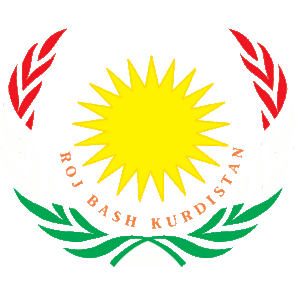The UK government officially recognised the campaign by Islamic State (Isis) against the Yazidis as a genocide on 1 August, joining 18 other nations in acknowledging the attempted erasure of the small ethnic group
In August 2014 Isis massacred around 5,000 Yazidis, sold thousands of young women into sexual slavery, and displaced around 400,000, out of a total population of 550,000 to 700,000. Tens of thousands of Yazidis fled up Mount Sinjar, where they languished in the hot sun with no access to food or water, before Kurdish forces opened up a humanitarian corridor. The area was declared liberated at the end of 2015, and today 200,000 remain displaced.
“It’s like the genocide is still continuing,” says a Yazidi human rights activist in northern Iraq, who wished to remain anonymous. “Two thousand women are still in captivity, there are no job prospects, we have no political power. We are the property of political factions.”
Isis’s destruction of Yazidi shrines was a deliberate part of the genocidal campaign. While Isis typically demolished pre- or non-Islamic religious sites, this practice was especially debilitating for the Yazids. The Yazidi religion traditionally exists through the enactment of rituals and the verbal telling of stories at particular physical sites that are related to their deities.
“Ritual and social life in the community has always been strongly connected to the shrines and to other religious sites, such as sacred stones or trees, that compose for the Yazidis a sacred landscape,” says Marc Marin Webb, a University of Pennsylvania researcher who is working in the region. “The shrines concentrate the main yearly events for the community, such as feasts and pilgrimages, and provide a social cohesion as well as a religious identity.”
Following the liberation of Iraq, there was a huge effort to reconstruct the 68 shrines that were destroyed. In Bashiqa and Bahzani, two Yazidi towns north-east of Mosul, Yazidi villagers prioritised their rebuilding above that of their houses. The community-led effort lasted from 2016 to 2017 and restored around 24 shrines in the area.
Reconstruction efforts in Sinjar followed a similar pace with a higher international profile. Funds were donated by the Geneva-based heritage protection group Aliph and the World Monuments Fund towards the restoration of the 12th-century Mam Rashan Shrine and others. To date, across the Yazidi territory, most of the destroyed shrines have been rehabilitated, with some bearing new additions that commemorate the genocide.
But after this initial activity, the situation for the Yazidis plateaued.
“I was in Sinjar two weeks after the liberation, and I was there earlier this year,” says the British-Kurdish film-maker and photographer Yad Deen. “Not much has changed. Most of Sinjar is still in ruins. Nearly all houses are still left with no windows, doors or roofs.”
Most Yazidis remain in camps in Kurdistan, and either want to return to Sinjar or be given exit visas to emigrate. In the Yazidi territory, which lies across Iraqi Kurdistan and federal Iraq, corruption, nepotism and a lack of economic prospects are endemic. The Yazidis have been left out of the power-sharing agreement in Baghdad and have fallen through the cracks of political representation between Kurdistan and federal Iraq. Censorship silences discussion around these issues (no one The Art Newspaper spoke to felt safe enough to go on record).
Political tensions are also turning violent. A major incident recently occurred after Iraqi security forces brought back around 25 Sunni families to live in Sinjar. A Yazidi woman claimed to recognise one of them as a former member of Isis who raped her in 2014. A group of Yazidis then protested at the mosque in the village, alleging that they had not been properly consulted about the return. According to reports, they were then falsely accused of burning the mosque, prompting a backlash of hate speech on Kurdish social media that repeated harmful tropes about the ethnic group.
Unesco World Heritage Site hope
Deen and his collaborator Renas Babakir are currently holding an online fundraising sale of photographs that Deen took of Kocho, a Yazidi village that suffered badly in the genocide—most of the male inhabitants were massacred and its women and children abducted and enslaved. The proceeds will benefit Sinjar Academy, a US-based NGO operating in Sinjar that supports educational and humanitarian activities for Yazidis.
- I was in Sinjar two weeks after the liberation, and I was there earlier this year. Most… is still in ruins
Yad Deen, photographer
Rashid International, a human rights charity, partnered with the US-based NGO Yazda and the UK-based Eamena project in 2018-19 to research the destroyed shrines, in order to provide information for cases that are being litigated in the UK, Germany and other European countries against former Isis members. They were able to investigate some of the shrines but could not document the remaining 44, as the security situation in Iraq was too unstable, and now the funding had dried up.
“The genocide declaration usually unlocks money,” says Seán Fobbe, the chief legal officer of Rashid. “But in the case of the Yazidis, the funding is not enough.”
• For more on the online fundraiser of photographs of Kocho, see sinjarhome.com
Link to Photos:
https://www.theartnewspaper.com/2023/09 ... s-genocide



















